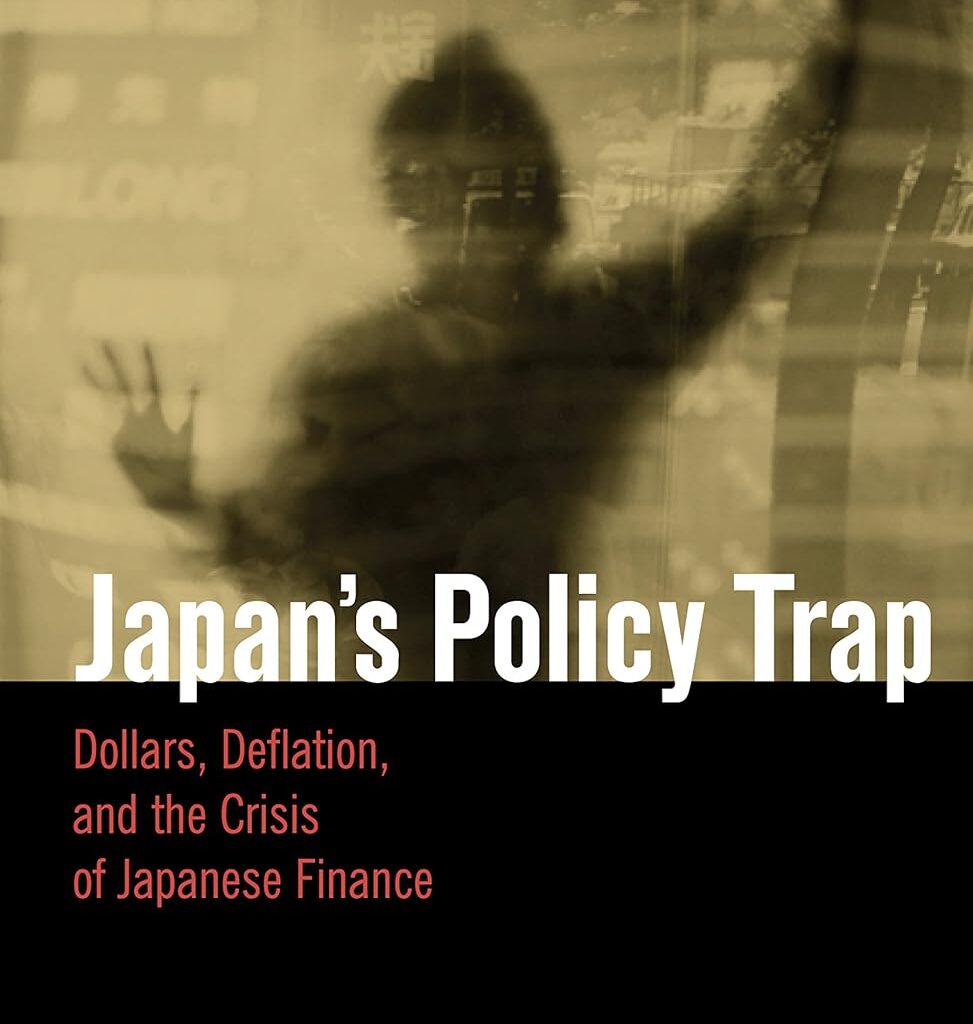Table of Contents

The Rising Tide of Red: Uncovering the Roots of The Japanese Debt Crisis
In the intricate tapestry of global economics, The Japanese Debt Crisis presents a uniquely perplexing puzzle, inviting a closer examination. This article delves into the various facets of what is often referred to as ‘The Japanese Debt Trap,’ exploring its origins, current status, and broader implications for Japan and the global economy.
Once hailed as a post-war economic miracle, Japan has, over the decades, found itself entangled in a web of financial intricacies that challenge conventional economic wisdom. This nation’s journey from rapid industrialization to becoming a harbinger of a sustained debt crisis offers invaluable lessons and cautionary tales.
As we unravel the layers of Japan’s economic narrative, we encounter a story that intertwines elements of overzealous investment, policy missteps, and unprecedented demographic shifts. The implications of Japan’s debt extend far beyond its shores, offering a mirror to other economies grappling with similar challenges.
This exploration is not merely an analysis of numbers and fiscal policies but a broader reflection on economic resilience, cultural influences, and the evolving dynamics of global finance.
This article aims to provide a comprehensive overview of the Japanese Debt Trap, dissecting its causes, examining its current state, and contemplating its future implications. In doing so, we offer a narrative beyond statistics, considering this prolonged economic predicament’s human and societal impacts. Join us as we navigate the complexities of Japan’s economic landscape, where historical context, policy decisions, and global interdependencies converge to shape a nation’s fiscal destiny.
The Genesis of Japan’s Debt Crisis
The Economic Boom and its Aftermath
To understand Japan’s current debt problem, returning to the post-war economic miracle is essential. This era saw Japan’s rapid transformation into a global economic powerhouse driven by robust industrial growth and technological innovation. During this period, Japan established itself as a leading exporter of electronics, automobiles, and other high-quality goods, fueling extraordinary economic growth. However, this success story was not without its pitfalls.
The same factors that propelled Japan to economic stardom also sowed the seeds for future financial turmoil. Excessive investment in real estate and stocks, driven by easy credit and speculative hunger, led to an unsustainable asset bubble. The government, buoyed by the success, failed to implement necessary regulatory measures, setting the stage for a dramatic reversal of fortune.
Bursting of the Bubble and the Onset of Deflation
The spectacular burst of Japan’s asset bubble in the early 1990s marked the beginning of a deflationary spiral. Property and stock market values plummeted, leaving banks with many bad debts and corporations with devalued assets. This financial crisis plunged the economy into a period of stagnation known as the ‘Lost Decade.’
The Japanese government’s response to this economic downturn was a series of fiscal stimulus packages aimed at reviving growth. However, these measures, primarily focused on massive public works projects, were only partially successful. While they provided temporary relief, they also led to a significant increase in public debt. The persistent low-interest rates set by the Bank of Japan, intended to stimulate borrowing and spending, further complicated the situation by diminishing the returns on savings and investments, exacerbating the deflationary environment.
This economic stagnation and deflationary pressure period presented a complex challenge for policymakers. Traditional financial tools seemed ineffective in reviving growth, and the accumulating debt began to cast a long shadow over Japan’s fiscal sustainability. The genesis of Japan’s debt crisis is a tale of economic exuberance followed by a harsh confrontation with reality, setting the stage for a prolonged struggle with debt and deflation that continues to shape the country’s economic policies and prospects.
Anatomy of the Debt Trap
Rising Public Sector Debt
A key feature of The Japanese Debt Crisis is the relentless rise in public sector debt due to prolonged economic stimulus. The government embarked on extensive public works and corporate bailouts to revive the economy, inadvertently swelling the national debt. While intended to kickstart economic activity, this strategy resulted in a ballooning fiscal deficit.
The magnitude of Japan’s public debt, now exceeding twice its Gross Domestic Product (GDP), is a glaring indicator of the depth of the Japanese Debt Crisis. This debt accumulation is unique not just in its size but also in its composition. Unlike many Western countries, a significant portion of Japan’s debt is held domestically, posing risks and potential buffers. The government’s reliance on selling bonds to Japanese households and financial institutions has kept the deficit manageable. Yet, it raises concerns about the sustainability of this model in the face of an aging population and potential shifts in investor confidence.
Low Interest Rates and Their Implications
Central to Japan’s debt dynamics is the Bank of Japan’s enduring commitment to low-interest rates. While initially designed as a short-term measure to combat deflation and encourage lending, this monetary policy has become a long-term fixture. The near-zero interest rate environment has had a paradoxical effect. On one hand, it has made servicing the government’s debt more manageable, preventing a fiscal crisis. On the other hand, it has discouraged savings and investment in the domestic economy, as investment returns remain low.
Moreover, this prolonged period of low-interest rates has had significant implications for the banking sector and the broader economy. Banks, facing narrow interest margins, have become increasingly cautious in their lending practices, which has stifled business investment and innovation. Additionally, the low-yield environment has pushed domestic and international investors to seek higher returns elsewhere, leading to capital outflow and concerns about the long-term health of the Japanese economy.
The anatomy of The Japanese Debt Trap is a complex interplay of fiscal and monetary policies, each with its consequences. The government’s heavy reliance on public sector debt to stimulate the economy and the central bank’s low-interest rate policy has created a precarious balance. Navigating this trap requires economic reforms and a strategic rethinking of Japan’s approach to growth, debt management, and monetary policy. This section of the article will explore these dynamics in detail, shedding light on the challenges and potential pathways forward for Japan’s economy.
The Global Context and Japan’s Position
Comparing Japan’s Debt to Other Economies
While The Japanese Debt Crisis scenario is alarming, a comparative analysis with other significant economies reveals exciting contrasts. Japan’s situation is often juxtaposed with countries like the United States, which also has a high debt-to-GDP ratio, but there are stark differences in how this debt is structured and managed. One of the most notable distinctions is that a vast majority of Japan’s debt is held domestically, primarily by Japanese citizens and institutions.
This insular nature of The Japanese Debt Crisis provides a certain degree of insulation from the volatility of international markets. However, it also raises questions about the future, particularly concerning Japan’s aging population and the shrinking pool of domestic savers.
Another aspect of this comparison lies in understanding the implications of The Japanese Debt Crisis on the global economy. As the world’s third-largest economy, Japan plays a crucial role in global financial markets. Its monetary policies and debt management strategies have ripple effects, influencing everything from currency exchange rates to global investment patterns. The international community, therefore, watches Japan’s handling of its debt crisis closely, as it may offer insights or warnings for other economies facing similar challenges.
The Role of International Financial Institutions
Institutions like the IMF and World Bank play a nuanced role in shaping Japan’s economic policies and debt narrative. Historically, these institutions have advocated for fiscal austerity and structural reforms in economies grappling with high debt. However, Japan’s approach has been somewhat atypical, focusing more on fiscal stimulus and maintaining low-interest rates. The stance of these international financial institutions towards Japan’s strategies has evolved, reflecting a broader shift in economic thinking about debt and growth.
The role of these institutions in Japan’s context also extends to their influence on global economic stability. Their assessments and recommendations regarding Japan’s economy are significant, influencing investor confidence and international economic policies. This section will explore how the IMF and World Bank’s perspectives on Japan’s debt have impacted global economic discourse and policymaking, highlighting the interconnectedness of national economic strategies and global financial health.
In summary, Section 3 explores The Japanese Debt Crisis globally, offering a comparative perspective and examining the influence of international financial institutions. This exploration highlights the uniqueness of Japan’s situation and underscores the interconnectedness of global economies in the face of economic challenges and uncertainties.
The Societal Impact and Future Projections
The Impact on Japanese Society
Japan’s debt saga extends beyond economic figures, deeply affecting its societal fabric. The implications of this prolonged financial strain are multifaceted, influencing everything from social welfare to demographic trends. One of the most visible impacts is on Japan’s aging population. The burden on social security and healthcare systems intensifies as the country faces an increasing number of retirees.
This situation is compounded by the nation’s declining birthrate, leading to a shrinking workforce that must support an ever-growing retired population. Moreover, the persistent economic stagnation has led to changes in the labor market. There is an increasing prevalence of non-regular employment, offering less stability and fewer benefits than traditional lifelong employment.
This shift affects income levels, consumer spending, and overall economic vitality. Additionally, the younger generation in Japan faces unique challenges, growing up in an economy that has been stagnant for much of their lives. This has altered expectations regarding employment, savings, and lifestyle, potentially reshaping Japan’s social and economic landscape in the long term.
Future Outlook: Predictions and Possibilities
As experts ponder Japan’s economic future, a range of scenarios emerge, from optimistic to cautionary. Some economists argue that while sizable, Japan’s debt is manageable due to its domestic ownership and substantial assets.
They suggest that with strategic reforms, Japan could revitalize its economy and gradually reduce its debt burden. This optimistic scenario hinges on Japan’s ability to implement effective fiscal policies, stimulate productivity and growth, and navigate demographic challenges.
On the other hand, more cautionary predictions highlight the risks of the current trajectory.
These include potential crises triggered by a loss of confidence in the government’s ability to manage debt or demographic shifts leading to a shortage of domestic bond buyers. Such scenarios could lead to a sudden rise in interest rates, increasing the cost of debt servicing and potentially leading to a fiscal crisis.
In considering these projections, it’s essential to recognize the uncertainties and variables at play. Various factors will shape Japan’s future, including global economic trends, technological advancements, and domestic policy decisions.
This section will explore these potential futures, examining the challenges and opportunities ahead for Japan as it navigates its complex debt landscape.
In conclusion, Section 4 delves into the societal impacts of The Japanese Debt Crisis and contemplates its future, highlighting the profound and far-reaching consequences of this financial challenge. This exploration underscores the importance of considering economic and social dimensions in understanding and addressing national debt issues.
Influential Books Analyzing the Basic Foundations Of The Japanese Debt Trap
Japan’s Policy Trap: Dollars, Deflation, and the Crisis of Japanese Finance
“Japan’s Policy Trap: Dollars, Deflation, and the Crisis of Japanese Finance,” written by Akio Mikuni and R. Taggart Murphy, provides an in-depth analysis of Japan’s prolonged economic stagnation. The authors, experts in Japanese finance, argue that Japan has fallen into a ‘policy trap’ that is difficult to escape.
They explore the historical roots and political decisions that have led to Japan’s current predicament, mainly focusing on distorted monetary policies that have driven the economy deflationary. The book also connects Japan’s economic challenges and the U.S. economy, particularly the U.S. trade and current account deficits. It highlights how Japan’s dollar-denominated trade surplus, which has exceeded official reserves and currency in circulation for the last two decades, has significantly and increasingly negatively impacted Japan’s monetary policy.
This has forced Japanese authorities to support an accumulation of deflationary dollars, creating yen liabilities unrelated to production and resulting in the largest financial bubble in history. The bursting of this bubble led to massive public works spending and an explosion in public sector debt.
The authors caution about the potential global consequences if Japan fails to support its large dollar claims, including a possible deflationary spiral in Japan and a crash in the global value of the dollar. They suggest that resolving Japan’s issues would require significant economic adjustments, particularly in reducing Japan’s surplus alongside reductions in deficits in other economies, such as the United States
Japan Transformed: Political Change and Economic Restructuring
“Japan Transformed: Political Change and Economic Restructuring” by Frances Rosenbluth and Michael F. Thies comprehensively analyzes Japan’s significant political and economic changes since the 1990s.
The book explores Japan’s transition from a political economy managed by regulations to one with a neoliberal orientation, a process that occurred with little domestic or international fanfare. This transformation was part of Japan’s rebuilding efforts following the economic difficulties of its recent past.
The authors delve into Japanese history, illustrating the country’s multiple transformations over the centuries and then focus on the critical role of economic globalization. They discuss how global economic integration and urbanization destabilized Japan’s postwar policy coalition, significantly impacting the ruling Liberal Democratic Party’s ability to buy votes.
This led to new electoral rules that emphasized competing visions of the public good, contrasting with the previous system that often saw candidates from the same party competing against each other.
The new electoral system is described as more tethered to the vast swath of voters in the middle of the political spectrum, which has significant implications for policymaking in Japan.
The book suggests that Japan’s politics, economics, and foreign policy have taken a neoliberal path regardless of the ruling party. This shift has significant consequences for Japan’s citizens and its global neighbors, as the nation continues to hold a formidable economy and a political system that is healthier than at any time in its history
Expanding Debt Trap and Reviving the Biophysical View on Wealth for a More Sustainable and Equitable Future: The Buddhist Perspective on a Decent Life
“Expanding Debt Trap and Reviving the Biophysical View on Wealth for a More Sustainable and Equitable Future: The Buddhist Perspective on a Decent Life” is a chapter within the book “Reconsidering the Privileged Powers of Banks” by Kozo Torasan Mayumi and Ansel Renner.
This chapter delves into the interconnection between money, bioeconomics, and sustainability, focusing on the balance between money stock, production scale, and real capital. It highlights the challenges posed by the propensity of banks to create ever more money, a practice that can lead to imbalances and financial instability.
The authors argue for a revised understanding of wealth, one that is distinct from financial capital. They advocate for separating real capital from financial capital, critiquing the common confusion over debt and wealth. Using Japanese bonds and T-bills as examples, the chapter explores the concept of a debt trap in the context of global economies. The role of influential organizations, such as the World Bank and the International Monetary Fund, is examined for their structural limitations and influence on global policy.
The chapter emphasizes the necessity of redefining wealth to acknowledge the biophysical burden of money and calls for a public demystification of the relationship between monetary debt and wealth.
The broader book in which this chapter appears, “Reconsidering the Privileged Powers of Banks,” explores the unique abilities of commercial banks to create money from nothing and allow this money to grow with favorable interest rates. The authors highlight such practices’ unnatural defiance of the first and second laws of thermodynamics.
The book emphasizes the dual natures of money, wealth, and real capital, acknowledging them as individual affluence and collective biophysical debt simultaneously. It culminates in proposing completely new foundations of money, wealth, and real capital for societies pursuing responsible development
Frequently Asked Questions (FAQ) Section
- Q: “What Led To Japan’s Massive Public Debt?”
- A: Japan’s journey to its current state of massive public debt is a culmination of several factors. Key among them was the burst of the asset bubble in the early 1990s, which led to a prolonged period of economic stagnation and deflation. The government’s response significantly increased public spending, primarily through large-scale public works projects and corporate bailouts.
- Additionally, the Bank of Japan’s policy of maintaining low-interest rates for an extended period played a crucial role. This policy aimed to stimulate economic growth but also contributed to increasing debt as it discouraged savings and investment in other more productive areas.
- Q: “How Does The Japanese Debt Crisis Situation Compare To Other Major Economies?”
- A: The Japanese Debt Crisis is unique compared to other major economies, especially in its size and structure. Japan’s debt-to-GDP ratio is one of the highest among developed nations. However, unlike many countries with high debt levels, a significant portion of Japan’s debt is held domestically.
- This means the Japanese government owes most of this debt to its citizens and institutions rather than foreign creditors. This domestic ownership provides a buffer against external financial shocks but poses challenges, particularly in Japan’s aging population and declining workforce.
- Q: “What Are The Potential Future Implications Of Japan’s Debt For The Global Economy?”
- A: The implications of The Japanese Debt Crisis for the global economy are manifold. As one of the world’s largest economies, Japan plays a significant role in global financial markets. In Japan, persistent economic stagnation and debt issues can have ripple effects, influencing global investment patterns, currency markets, and economic stability.
- If Japan faces a debt crisis, it could lead to a loss of investor confidence globally and potentially trigger financial market volatility. On the other hand, if Japan successfully manages and reduces its debt, it could provide a model for other nations grappling with similar issues, contributing to global economic stability.
- Q: “Is There A Risk Of Japan Defaulting On Its Debt?”
- A: The risk of Japan defaulting on its debt is generally considered low, primarily due to the nature of its debt being largely held domestically. The Japanese government has a high level of control over the currency in which the debt is issued (Japanese Yen), and the domestic financial institutions hold a large portion of the debt.
- However, the situation could become more challenging if domestic investors lost confidence or a dramatic shift in demographic trends impacted savings rates.
- Q: “What Measures Can Japan Take To Reduce Its Public Debt?”
- Japan needs to implement fiscal and structural reforms to reduce its public debt. This includes stimulating economic growth through innovation and productivity enhancements, possibly through technological advancements and workforce development.
- Additionally, fiscal consolidation measures, such as tax reforms and strategic spending cuts, are essential. Japan could also benefit from policies that address demographic challenges, such as encouraging higher birth rates and integrating more women and elderly into the workforce. The effectiveness of these measures depends on careful balancing to avoid stifling economic growth while reducing the debt burden.



